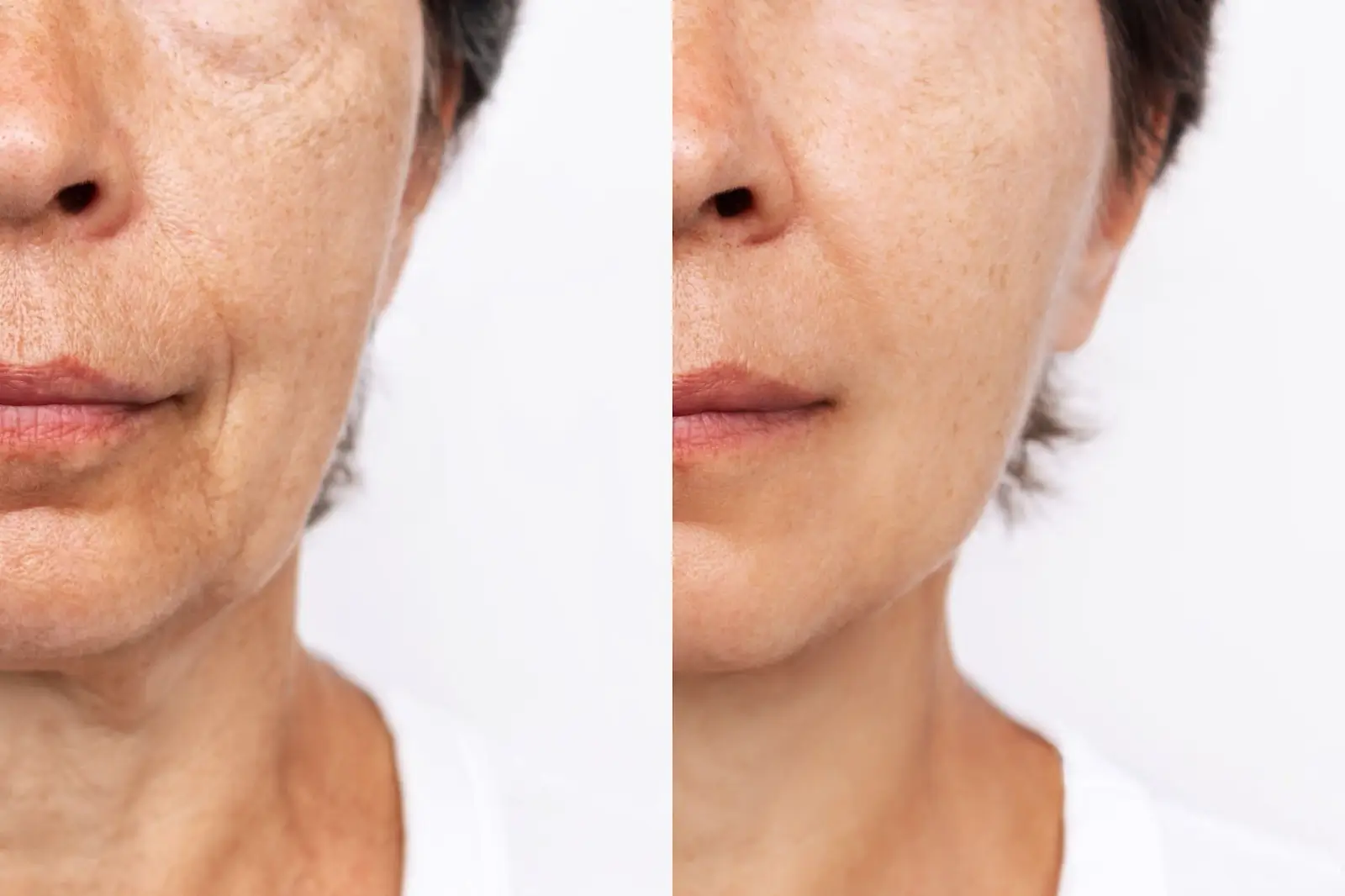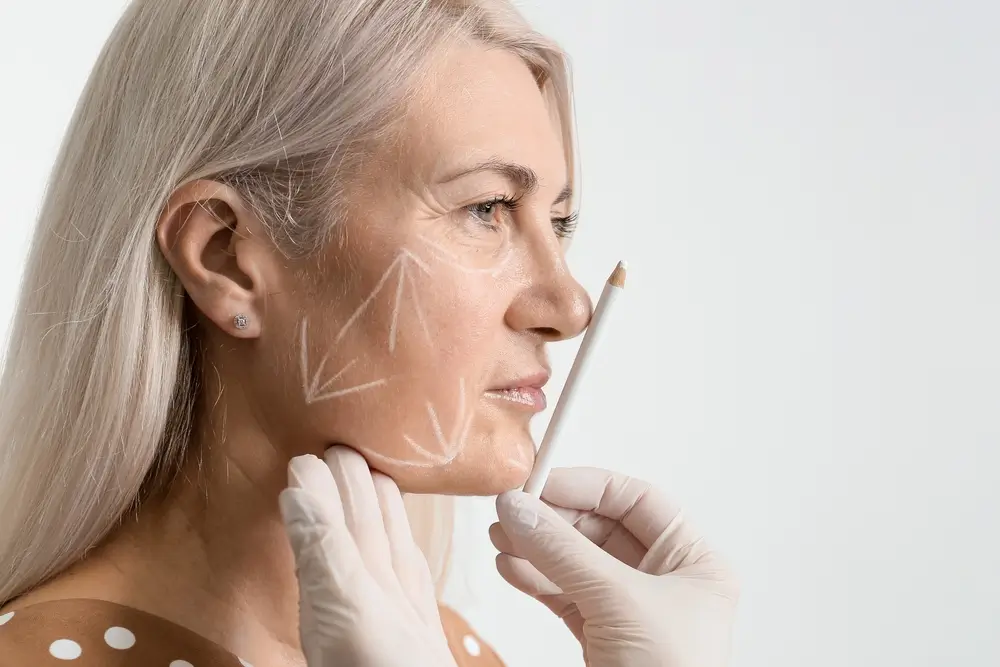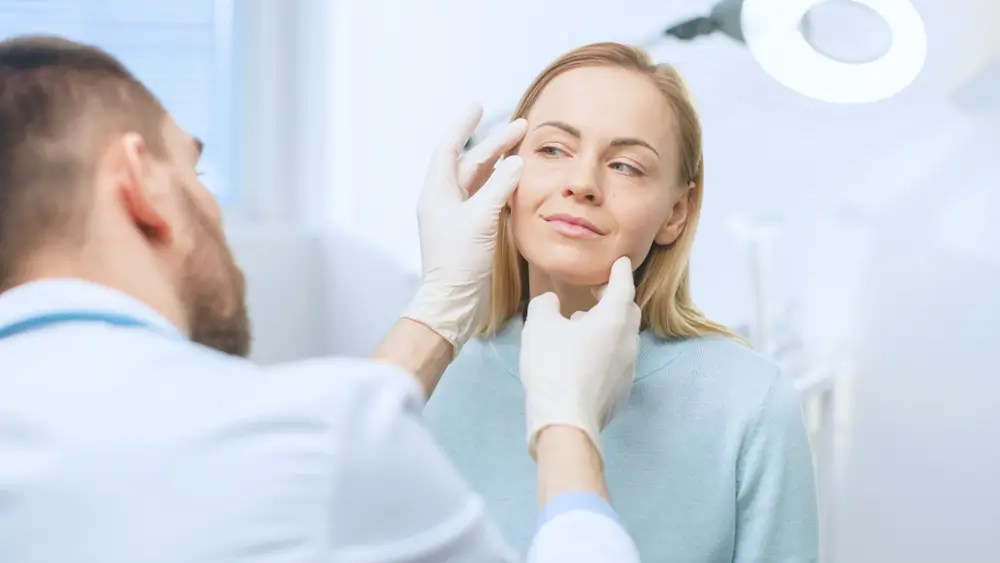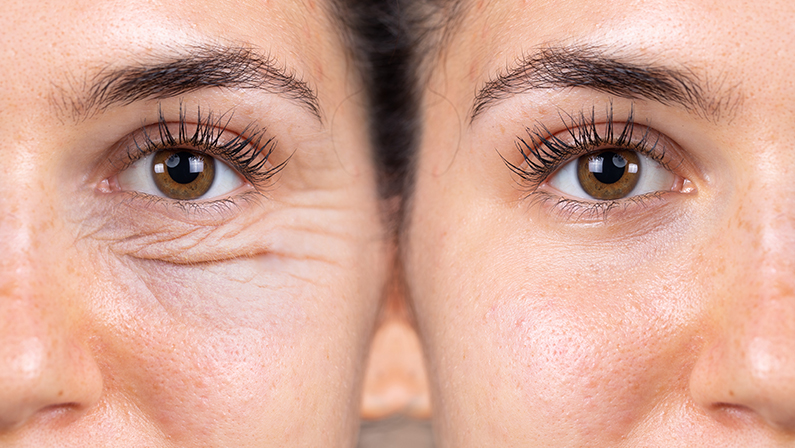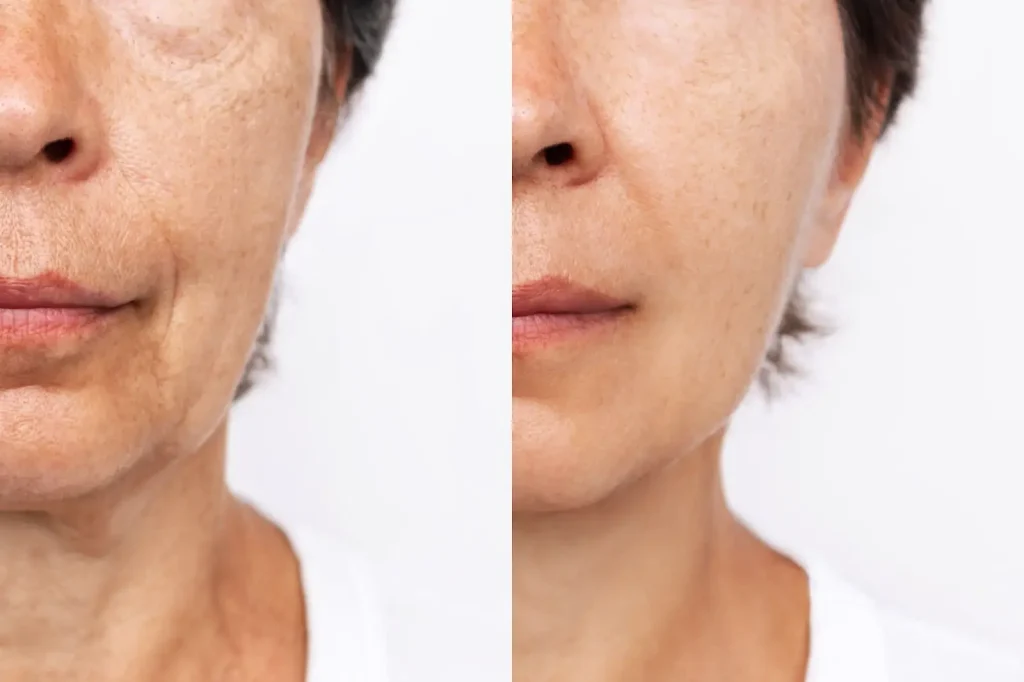Cosmetic enhancements do not always require you to go under the knife. You can have a non-surgical alternative to turn back the hands of time: the liquid facelift.
As technology and techniques advance, individuals seeking a more youthful appearance explore alternatives that don’t involve invasive surgeries and extended downtime.
The liquid facelift has become popular for those looking to rejuvenate their appearance without going to surgery.
Here’s the science behind liquid facelift to guide you towards a decision of beauty enhancement.
What Is a Liquid Facelift?
A liquid facelift is a non-surgical cosmetic procedure designed to restore a more youthful appearance to the face by using a combination of injectable dermal fillers and muscle relaxants.
Unlike traditional facelift surgeries, which involve incisions and tissue manipulation, a liquid facelift relies on the strategic placement of injectables to address various signs of aging.
This innovative approach offers individuals a minimally invasive alternative to achieve smoother skin, diminished wrinkles, and enhanced facial contours.
The key lies in the skillful application of dermal fillers, which are substances that add volume to targeted areas, and muscle relaxants, which temporarily soften facial muscles to reduce the appearance of lines.
How Does a Liquid Facelift Work?
Dermal fillers, often containing substances like hyaluronic acid or collagen, are strategically injected to plump up sagging or hollow areas, restoring volume and smoothness.
Meanwhile, muscle relaxants such as Botox or Dysport are strategically used to temporarily paralyze specific facial muscles, reducing the appearance of dynamic wrinkles.
The synergy between these components allows for a customized and natural-looking rejuvenation, addressing multiple concerns in a single session.
The procedure is often quick, with minimal discomfort and downtime, making it an appealing option for those seeking a refreshed appearance without the commitment and recovery associated with traditional surgical facelifts.
Treatment Areas for Liquid Facelifts
The treatment areas for a liquid facelift are strategically selected to achieve a harmonious and natural-looking result.
- Fine Lines and Wrinkles: Precision injections can smooth out fine lines around the eyes, forehead, and mouth, reducing the appearance of wrinkles.
- Lost Volume: Dermal fillers are strategically employed to restore volume to areas that have lost fullness, such as the cheeks and temples.
- Facial Contours: Liquid facelifts can enhance and define facial contours, providing a lifted and sculpted appearance to the midface and jawline.
What Fillers Are Used in Liquid Facelifts?
These injectable substances are crucial in restoring volume, smoothing out wrinkles, and creating a revitalized facial profile.
- Hyaluronic Acid Fillers: Known for their ability to attract and retain moisture, hyaluronic acid fillers like Juvederm and Restylane are commonly used to add volume, reduce fine lines, and create a hydrated, plump look.
- Collagen-Stimulating Fillers: Fillers such as Sculptra stimulate the body’s natural collagen production, gradually improving volume and skin texture.
- Calcium Hydroxylapatite Fillers: Substances like Radiesse, composed of calcium hydroxylapatite microspheres, are utilized to add volume and stimulate collagen production, offering a firmer and lifted appearance.
- Poly-L-Lactic Acid Fillers: These fillers, like PLLA (poly-L-lactic acid), work by promoting collagen synthesis over time, resulting in improved skin elasticity and a natural-looking rejuvenation.
Are You a Candidate for a Liquid Facelift?
As a non-surgical cosmetic procedure, this approach appeals to a broad spectrum of individuals seeking facial rejuvenation without the commitment of traditional surgery.
- Mild to Moderate Signs of Aging: Liquid facelifts are particularly effective for those with mild to moderate signs of aging, including fine lines, wrinkles, and loss of facial volume.
- Good Overall Health: Candidates should have good overall health with no significant medical conditions that may interfere with the healing process.
- Realistic Expectations: Realistic expectations are crucial, as a liquid facelift provides subtle enhancements rather than dramatic transformations.
- Preference for Non-Invasive Procedures: Individuals who prefer non-surgical alternatives and seek minimal downtime often find liquid facelifts appealing.
Are There Any Risks or Side Effects of Liquid Facelift?
While liquid facelifts are generally considered safe, it’s essential to be aware of the procedure’s potential risks and side effects. Understanding these factors allows individuals to make informed decisions about their cosmetic enhancement journey.
- Temporary Bruising and Swelling: Mild bruising and swelling at the injection sites are common but usually subside within a few days.
- Allergic Reactions: Though rare, allergic reactions to the ingredients in dermal fillers can occur, emphasizing the importance of discussing any allergies with the practitioner beforehand.
- Asymmetry or Uneven Results: Achieving perfect symmetry can be challenging, and there is a slight risk of uneven results, emphasizing the importance of choosing an experienced and skilled practitioner.
- Infection or Injection-related Issues: Infection at the injection site is a rare but possible risk, highlighting the importance of choosing a qualified professional and maintaining proper aftercare to minimize complications.
Are Liquid Facelifts Safe?
When performed by qualified and experienced practitioners, liquid facelifts are generally considered safe.
The key to a successful and risk-mitigated procedure lies in selecting a reputable professional who understands facial anatomy and uses FDA-approved products.
Dermal fillers and muscle relaxants used in liquid facelifts have undergone extensive testing for safety and efficacy. While some temporary side effects such as bruising, swelling, or redness at the injection sites may occur, they are typically mild and short-lived.
As with any medical procedure, it’s crucial for individuals to undergo a thorough consultation, disclose their medical history, and follow post-treatment care instructions to ensure the safest and most satisfying liquid facelift results.
Consulting with a qualified practitioner can address concerns, provide personalized advice, and contribute to a positive and secure liquid facelift experience.
What’s It Like to Get a Liquid Facelift?
Embarking on the journey to a refreshed and rejuvenated appearance through a liquid facelift can be an exciting yet unfamiliar experience.
This non-surgical cosmetic procedure involves a series of steps designed to enhance facial features without the need for incisions or prolonged recovery.
From the initial consultation to the actual treatment, here’s a glimpse into what it’s like to undergo a liquid facelift:
- Consultation: The process begins with a consultation, where you discuss your aesthetic goals, medical history, and expectations with the practitioner.
- Treatment Plan: Based on the consultation, the practitioner develops a personalized treatment plan, identifying the specific areas to target and the type and amount of fillers to use.
- Injection Process: The actual procedure involves strategically injecting the chosen dermal fillers and muscle relaxants into the predetermined areas, with the practitioner focusing on precision and artistry to achieve the desired results.
- Immediate Results and Recovery: While some results may be visible immediately, there may be minor swelling or redness at the injection sites. The recovery is generally quick, allowing individuals to resume their daily activities shortly after the procedure.
How Long Does a Liquid Facelift Last?
The longevity of a liquid facelift varies depending on several factors, including the type of fillers used, individual metabolism, and lifestyle. On average, results can last anywhere from six months to two years.
Hyaluronic acid fillers tend to provide temporary results, while collagen-stimulating fillers may offer longer-lasting benefits as they stimulate the body’s natural collagen production over time.
Individuals often schedule follow-up treatments as needed to maintain the effects, ensuring a continuous and refreshed appearance. Regular consultations with the practitioner can help determine the optimal timing for touch-ups based on individual responses to the treatment.
What Is the Average Cost of a Liquid Facelift?
Determining liquid facelift cost involves various factors, including the practitioner’s expertise, geographic location, the specific products used, and the extent of the treatment. On average, a liquid facelift typically ranges from $1,500 to $5,000.
This estimate encompasses the expenses associated with both dermal fillers and muscle relaxants used during the procedure. Hyaluronic acid fillers, collagen-stimulating fillers, and muscle relaxants each contribute to the overall expense.
It’s essential for individuals considering a liquid facelift to consult with qualified practitioners for personalized assessments and cost breakdowns, taking into account their unique aesthetic goals and the recommended treatment plan.
Liquid Facelift Results and Recovery
Embarking on the journey to a rejuvenated appearance through a liquid facelift brings anticipation for the transformative results and a relatively swift recovery. Understanding what to expect in terms of outcomes and the recovery process is crucial for individuals considering this non-surgical cosmetic procedure.
- Immediate Results: The initial impact of a liquid facelift is often visible immediately, with targeted areas showing increased volume, reduced wrinkles, and enhanced facial contours, providing a more youthful and refreshed appearance.
- Temporary Side Effects: While results are immediate, there may be temporary side effects such as mild bruising, swelling, or redness at the injection sites, which typically subside within a few days, allowing individuals to resume their normal activities.
- Progressive Improvement: As the injected substances settle and integrate with the natural facial tissues, results may be improved over the following weeks, contributing to a natural and refined outcome.
- Quick Recovery: One of the key advantages of a liquid facelift is its minimal downtime, allowing individuals to return to their daily routines shortly after the procedure. Adhering to post-treatment care guidelines provided by the practitioner can enhance the overall recovery experience and contribute to optimal results.
Start Your Rejuvenation Journey
A liquid facelift, when performed by a skilled and experienced practitioner, can deliver remarkable results with minimal downtime. Understanding the treatment areas, types of fillers used, candidacy considerations, and the safety aspects allows individuals to make informed decisions about their aesthetic journey.
If you’re considering a liquid facelift in Dallas, Texas, look no further than the expertise of Dr. Bret Johnson, renowned for his commitment to excellence in aesthetic medicine. He will guide you throughout the liquid face lift before and after process. With the careful guidance of professionals like Dr. Johnson, individuals can take a path to rejuvenation, achieving natural-looking results and a revitalized sense of confidence.
Whether it’s addressing fine lines, restoring lost volume, or sculpting facial contours, the liquid facelift offers a personalized and non-invasive approach to turning back the hands of time, and with the expertise of the best plastic surgeon in Dallas, the journey becomes all the more rewarding. Contact Dr. Johnson today for a consultation.

